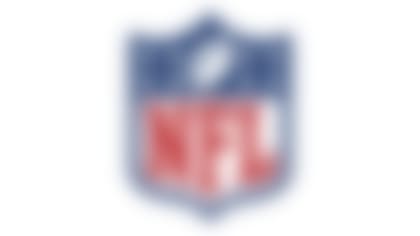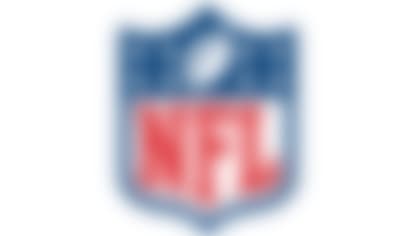Injury data for the 2016 season released by the NFL on Thursday showed a season-over-season decrease in concussions suffered by players.
Data compiled by QuintilesIMS Injury Surveillance and Analytics showed an 11.3 percent decrease in concussions from 2015 to 2016 (275 to 244) in data collected from all preseason and regular-season practices and games. In addition, there was an 8.7 percent decrease in in-game concussions from 2015 (183) to 2016 (167).
"That number 244 is aligned with about a five-year average, so those numbers are relatively consistent in that regard," said Jeff Miller, the NFL's senior vice president for health and safety. Miller added that a more sophisticated data set that expands upon numbers published Thursday will be released in the weeks ahead.
Although the number of concussions remains higher than in it did in 2013 and 2014, league officials cited an increase in awareness among teams and players as one of the reasons for the higher number.
"We've also seen an increase in self-reported concussions this year over last year, with last year being the first year that we really saw a significant number of self-reported concussions," said Dr. John York, chairman of the NFL owners' Health and Safety Advisory Committee. "So those all are all good changes with regards to the concussion protocol. And I would also say that they have an effect that may cause an increase in the number of concussions that we identify."
Researchers found independently certified athletic trainers and unaffiliated neurotraumatic consultants are taking a cautious approach when requesting examinations of players during games. The addition of a second ATC and the expanded scope of the league's Unaffiliated Neurotrauma Consultant Program is being reflected in the data, according to Dr. Christina Mack, director of epidemiology and outcomes research with QuintilesIMS.
"The ATC spotters are calling down to the field more frequently and they're calling down conservatively," Mack said. "Almost 70 percent of the players called (for examination) by an ATC are cleared to return to play after examination."
Mack also said that data collected from 2016 continues to show there is no evidence that abbreviated breaks between game days lead to an increase in injuries.
"Once again we found that there is no evidence in an increase in injuries when teams participate in a Thursday night game," Mack said, citing data. "Injury rates do not increase when teams have shorter intervals between games."
In addition, reported concussions sustained on kickoff returns saw a slight decrease over last season (20 to 17) after returns dropped by about four percent under the implementation of new kickoff rules.
Although the data showed progress in decreasing concussions, Dr. Mitchel Berger, member of the NFL's Head, Neck and Spine Committee, said more can still be done.
"I'm encouraged that the numbers are down, but I'm still far from satisfied." Berger said. "As a health care provider, I think, one of our absolute highest priorities is to get these numbers further down. We're going to have to really think about the ways we can do this. ... We've got to drill down into the Quintiles numbers and work with the medical committees and try to come up with some other ideas with how we can decrease the numbers."
The NFL has made 42 rule changes since 2002 to protect players, improve practice methods, better educate players and personnel on concussions and strengthen the league's medical protocols. The NFL deploys 29 medical professionals on the sidelines for each game. Working with the NFL Players Association, the league enforces a concussion protocol for players that has been instrumental in immediately identifying and diagnosing concussions and other head-related injuries.












